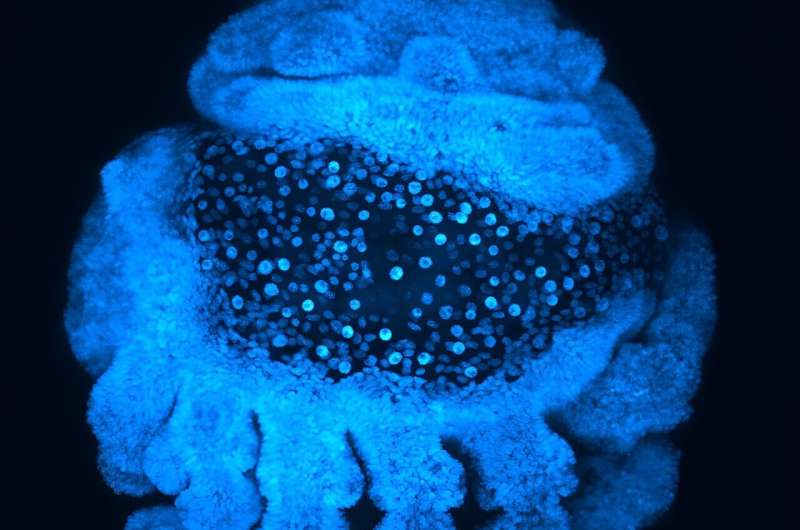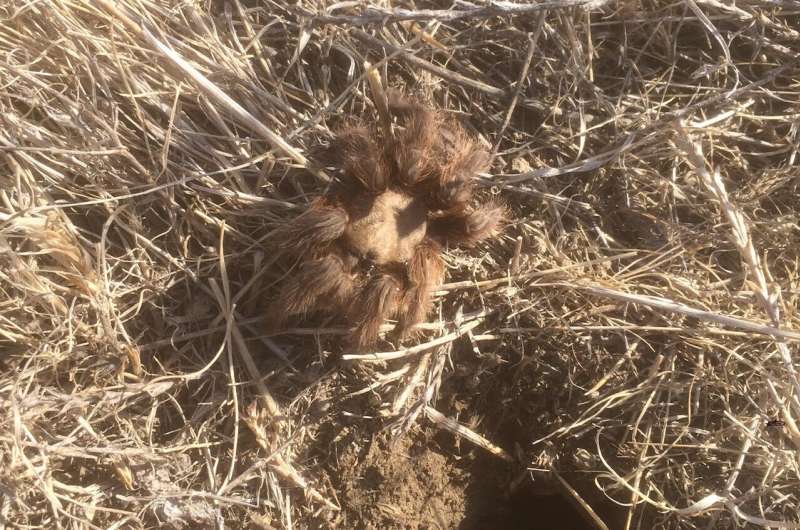This article has been reviewed according to Science X's editorial process and policies. Editors have highlighted the following attributes while ensuring the content's credibility:
fact-checked
peer-reviewed publication
trusted source
proofread
Ancient gene gives spiders their narrow waist, research reveals

An ancient gene is crucial for the development of the distinctive waist that divides the spider body plan in two, according to a study published August 29 in the open-access journal PLOS Biology by Emily Setton from the University of Wisconsin-Madison, US, and colleagues.
The spider body is divided into two sections, separated by a narrow waist. Compared to insects and crustaceans, relatively little is known about embryonic development in spiders, and the genes involved in the formation of the spider waist are poorly understood.
To investigate, researchers sequenced genes expressed in embryos of the Texas brown tarantula (Aphonopelma hentzi) at different stages of development. They identified 12 genes that are expressed at different levels in embryonic cells on either side of the waist.

They silenced each of these candidate genes, one by one, in embryos of the common house spider (Parasteatoda tepidariorum) to understand their function in development. This revealed one gene—which the authors named "waist-less"—that is required for the development of the spider waist. It is part of a family of genes called "Iroquois," which have previously been studied in insects and vertebrates.
However, an analysis of the evolutionary history of the Iroquois family suggests that waist-less was lost in the common ancestor of insects and crustaceans. This might explain why waist-less had not been studied previously, because research has tended to focus on insect and crustacean model organisms that lack the gene.
The results demonstrate that an ancient, but previously unstudied gene is critical for the development of the boundary between the front and rear body sections, which is a defining characteristic of chelicerates—the group that includes spiders and mites. Further research is needed to understand the role of waist-less in other chelicerates, such as scorpions and harvestman, the authors say.
The authors add, "Our work identified a new and unexpected gene involved in patterning the iconic spider body plan. More broadly, this work highlights the function of new genes in ancient groups of animals."
More information: taxon-restricted duplicate of Iroquois3 is required for patterning the spider waist, PLoS Biology (2024). DOI: 10.1371/journal.pbio.3002771
Journal information: PLoS Biology
Provided by Public Library of Science


















